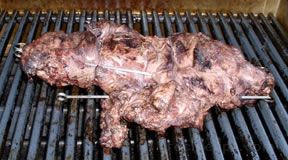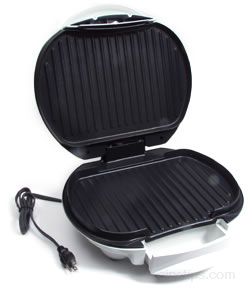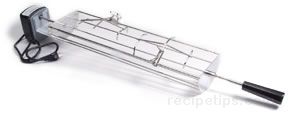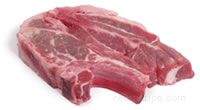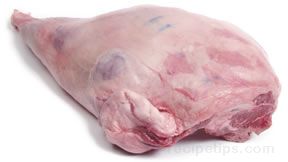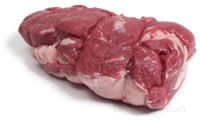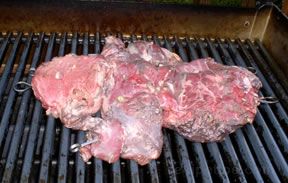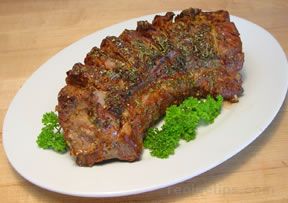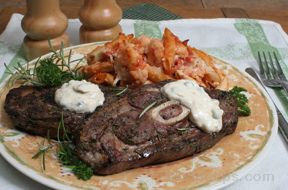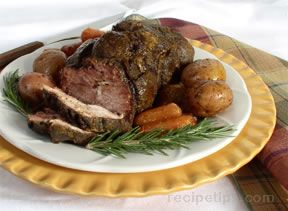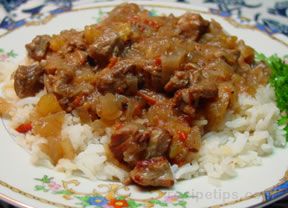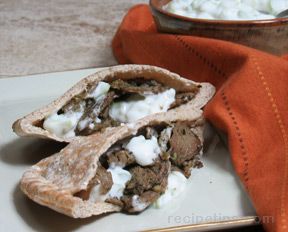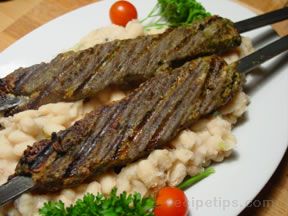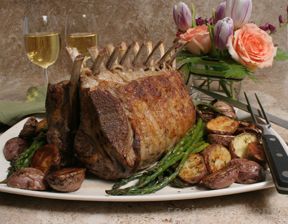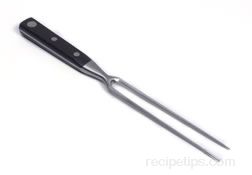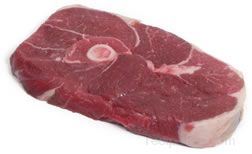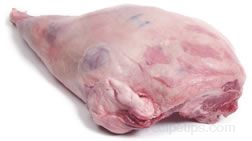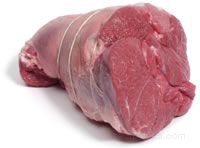Leg of Lamb | Rack of Lamb | Rolled Shoulder | Saddle of Lamb
Carving a Leg of Lamb
|
A leg of lamb is one of simplest roasts to carve. There are no complicated techniques involved and all that is required is a sharp knife and a means to steady the roast as it is being carved. It is best to carve the leg of lamb on a cutting board although if it is possible to carve it on a large platter if it is necessary to carve it at the table. |
 |
| Carving a Leg of Lamb |
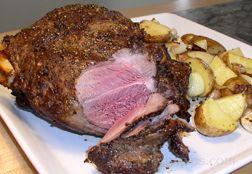
- Place the roast on the cutting board or platter with the fat side up.
- While carving, hold the roast in place with a meat fork or better still, attach to the leg bone a manche à gigot, which is a special tool used specifically for the purpose of gripping the leg bone without having to directly handle it.
- Begin slicing the rounded portion of the leg, cutting parallel with the bone.
- Continue cutting at half-inch intervals until reaching the rump bone (the large end of the leg).
- Turn the leg to the other side (the inner side of the leg) and carve in the same manner. The meat from this side of the leg has more fat and so the slices are a bit more tender.
- Cut slices from the shank end of the leg by running the knife in a parallel direction to the leg bone. The shank end is smaller than the main part of the leg, so the meat is of a greater degree of doneness.
- Place the slices on a platter or onto individual dinner plates.
|
Carving a Rack of Lamb
| A roasted rack of lamb, also known as a rib roast, usually consists of 7 or 8 ribs and is usually enough to serve 3 or 4 people. Besides the single rack, it may be prepared as a double rack with the ribs interlaced and tied (guard of honor) or 2 or 3 racks positioned and tied to form a crown. All 3 versions are among the easiest lamb roasts to carve. |
| Carving a Rack of Lamb |
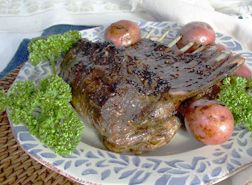
- After the required resting period, the roast should be placed on a cutting board for carving.
- If the rib roast is in the form of a guard of honor or crown roast, remove any string used for tying the roast.
- With a sharp knife, simply cut downward between each rib. When cutting between the crossed ribs of a guard of honor, 2 single rib portions are carved at one time.
- For presentation purposes, all three versions of the rib roast are often brought to the table first and are then carved on a warmed serving platter.
|
Carving a Rolled Lamb Shoulder Roast
| A rolled shoulder roast that has been boned is an ideal cut for stuffing and rolling. It is also one of the easiest roasts to carve. |
| Carving a Rolled Lamb Shoulder Roast |

- The roast should be placed on a cutting board for carving or for presentation purposes, it can be placed on a warmed meat platter for carving at the table.
- Remove the strings that were used to maintain the shape of the roast while it was cooking.
- While securing the roast with a meat fork, simply cut downward through the meat to carve ½ to ¾ inch slices.
|
Carving a Saddle of Lamb
| The saddle of lamb, which is a double loin roast, contains a high proportion of bone to meat, but the quality and tenderness of the meat is unsurpassed. Both the eye muscle and the tenderloin (on both sides of the backbone) are included in this roast. A few simple steps are required for carving. |
| Carving a Saddle of Lamb |
- Place the roast on a cutting board and while carving, hold the roast with a meat fork.
- Directly over the backbone, make a cut straight down to the bone.
- Make a diagonal cut toward the backbone to remove a wedge.
- Beginning at the missing wedge of meat, cut toward the backbone to remove slices of the eye meat. Run the knife in an increasingly horizontal fashion to carve the slices.
- Repeat these steps for the eye meat on the other side of the backbone.
- Turn the roast over. Following the contours of the bone, remove each tenderloin (from both sides of the saddle).
- Carve the tenderloin across the grain into small slices known as medallions.
|









